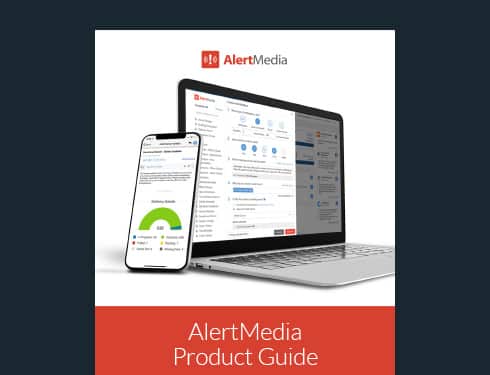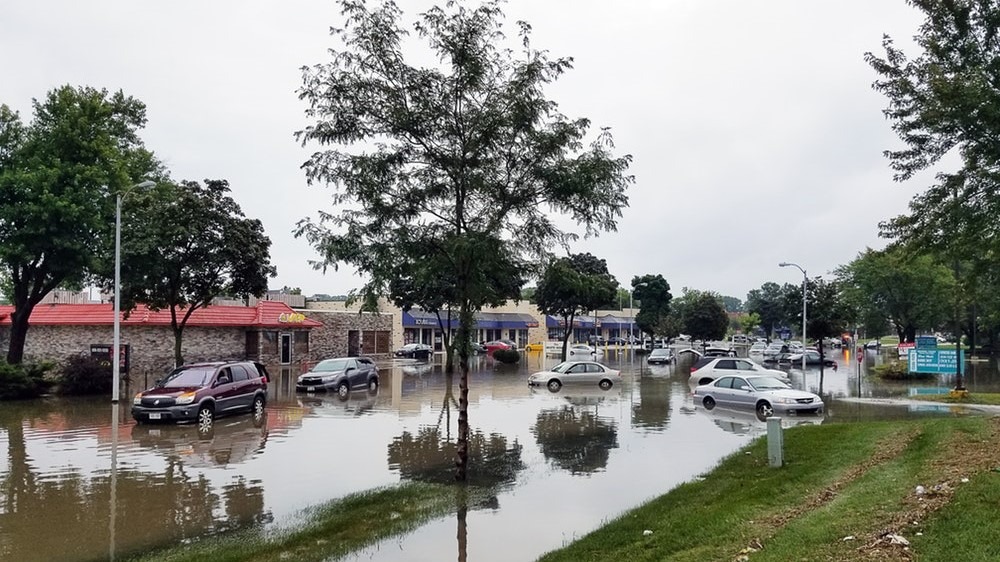
How to Promote Mental Health Within Your Organization
Maggie Mortali, Senior Program Director at the American Foundation for Suicide Prevention, shares why businesses play a critical role in mental health and how they can set the tone for the well-being of our workforce.

As a result of the stress caused by the pandemic, burnout, and the challenges of remote work, employees everywhere are prioritizing mental health and well-being in the workplace. In a 2020 study of 1,000 American workers, 80 percent reported that they would consider leaving their current company for one that focused more on employees’ mental health.
In a recent episode of The Employee Safety Podcast, Maggie Mortali, Senior Program Director at the American Foundation for Suicide Prevention (AFSP), joined us to discuss the importance of mental health and suicide prevention programming in the workplace and why businesses play a critical role in mental health and how they can set the tone for the well-being of a workforce.
Maggie Mortali joined AFSP in 2011 and established a department primarily dedicated to mental health and suicide prevention in the workplace. Maggie represents AFSP in a collaborative partnership with the American Association of Suicidology and the United Suicide Survivors International in the development of the first-ever national guidelines for workplace suicide prevention.
You can listen to the full episode below.
Q&A With Maggie Mortali, American Foundation for Suicide Prevention
Can you give us a quick overview of AFSP and its mission?
AFSP is a voluntary health organization. Our mission is to save lives and bring hope to those affected by suicide. AFSP is also the largest private source of funding for suicide prevention research in the country, and much of our work is designed to educate the public about mental health and suicide prevention.
Can you give us some context on mental health and suicide prevention issues and why organizations should prioritize them?
Mental health conditions are among the most burdensome health concerns in the United States. About one in five American adults aged 18 or older report a mental health condition each year, and these issues frequently negatively affect these individuals’ productivity, engagement, communication, and daily functioning.
Mental health conditions, like depression, are often associated with high rates of disability and even unemployment. And while depression is incredibly common and treatable, research has shown that only about 40 percent of employees who report severe depression receive treatment. Further research also indicates that depression left untreated can be a risk factor for suicide. This is one of the main reasons the workplace is an optimal setting to create a culture of mental health awareness. At AFSP, we believe that the more we can help workplaces educate their employees on mental health, help-seeking, and the risk factors and warning signs for suicide, the stronger their workforce will be overall.
What are some risk factors or warning signs that business leaders should be aware of that may indicate an employee needs help?
There is no single cause for suicide, so when we talk about suicide risk factors, we talk about multiple, intersecting factors that come together to create suicide risk. Suicide risk factors refer to characteristics or conditions that can increase the chance that a person may take their life. Risk factors can include health-related factors, environmental factors, and historical factors—for example, previous suicide attempts or a family history of suicide. Just as some people are at greater risk of heart disease due to high blood pressure or family history, some individuals are at a higher risk of suicide than others.
“"At AFSP, we see mental health and suicide prevention as part of workplace safety."”Maggie Mortali Senior Program Director, American Foundation for Suicide Prevention
When you’re concerned that a person may be suicidal, you should look for a change in their behavior or the presence of entirely new behaviors. This can especially be of concern if that new or changed behavior is related to a painful event, a loss, or change. Most people who take their lives exhibit one or more of these warning signs, and it’s typically either through what they say or what they do. Having that education and awareness of suicide risk factors and warning signs can be lifesaving. It can be difficult for someone to admit that they are experiencing some kind of mental health issue, so having coworkers and leaders in the workplace aware of these warning signs is crucial.
When an organization comes to AFSP for guidance on mental health or suicide prevention programming, where do you advise they start?
When an organization is interested in mental health and suicide prevention programming, we start by asking, what are they already doing? Often, we find that companies are offering health programs to their employees like employee assistance programs or mental health benefits, so it’s important to acknowledge the steps they’re already taking.
Then we talk about the different mental health and suicide prevention programming initiatives that AFSP offers. This could be starting with awareness campaigns designed to improve the understanding of mental health and suicide prevention. It could be some of our education programs, such as our Talk Saves Lives Program, which is a one-on-one suicide prevention education presentation. It could be our Interactive Screening Program, which is designed to increase help-seeking and connection to care. Or sometimes, it’s talking about our Postvention and Healing Conversation Programs, which enhance workplace protocols after a suicide loss, whether it be the loss of an employee, client, family member, or friend.
Just as it’s essential to meet individuals where they are at in the help-seeking process, it’s also important to meet organizations where they are in the process of building mental health programs. Organizations may want to start with general awareness and resources on mental health and suicide prevention as they work toward more comprehensive education and mental health programming. Our job is to work with organizations and provide them with the help and support that they need, no matter where they are in the process.
What are the most common issues or challenges you hear from businesses about why their programming is ineffective? What are some of the reasons employees typically don’t utilize employee assistance programs offered by their employers?
Often, organizations may think that mental health and suicide prevention only fit within HR, their employee assistance program, or some other health-related benefits. While those departments are incredibly important, at AFSP, we believe everyone should play a role in suicide prevention.
When programs are not being used—or maybe they’re not as effective as they could be—it’s often because they’re isolated within a department and employees don’t know about them until they’re dealing with a mental health concern or struggling with suicidal thoughts. Our goal is to help organizations see the importance of baking in mental health and suicide prevention, creating ongoing awareness campaigns, and sharing resources so that people know where to go before it becomes a crisis. Involving as many departments and employees as possible ensures that the resources and services available to employees are visible and being utilized.
Frequently, we’ve started our work with organizations when they come to us after the suicide of an employee to utilize our postvention resources and programming. Over time, part of that healing process is to build prevention into the core part of the business. We see mental health and suicide prevention as workplace safety, so engaging organizational leadership to address mental health and suicide prevention can be essential in suicide prevention efforts.
What guidance or resources does AFSP offer organizations that are experiencing those programming challenges?
We work with organizations at all stages of the suicide prevention process. Whether it’s engaging in one of our awareness campaigns or implementing some of our suicide prevention education or programs, there are multiple ways organizations can partner with AFSP. Suicide prevention and mental health programming can be overwhelming, and our role as mental health experts is to alleviate this challenge. We work collaboratively with organizations to get an understanding of their workplace. We don’t take a cookie-cutter approach—we employ best practices in a way that meets the particular needs of a company and its people.
Do you have any key takeaways or pieces of advice you can offer our audience on creating or sustaining effective mental health and suicide prevention programs at their organizations?
The main message that we want to get across is that suicide is preventable. Workplaces are a critical part of mental health and suicide prevention and can help set the tone for the health and well-being of a workforce. We’ve seen the impact of the COVID-19 pandemic across our workforce over the last year, and I think we’ve seen that workplaces can be critical environments for the health and safety of our employees. Mental health and suicide prevention are part of that. AFSP is dedicated to saving lives and bringing hope to those affected by suicide, and through that mission, we continue to work with employers to support their employees and the people they serve.
Portions of this article have been edited for clarity or brevity.





